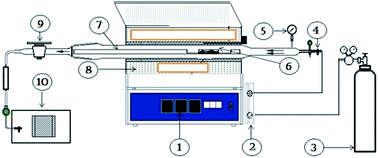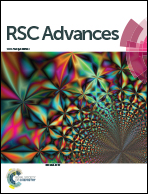Optimization of the microalgae Chlorella vulgaris for syngas production using central composite design
Abstract
Gasification has emerged as an effective thermochemical conversion technology for generating syngas products from biomass. Process conditions for optimizing the productivity and quality of syngas during gasification vary with the type and composition of the biomass. With escalating research interests in the development of biofuels from microalgae, resulting from its high biomass productivity, agronomical and environmental bioremediation benefits, the current study investigates the optimization of microalgal gasification for syngas production using high temperature horizontal tubular furnace. Four response variables (H2, CO, CO2, and CH4) were optimized under varying conditions of temperature (500–900 °C), microalgal (Chlorella vulgaris) biomass loading (0.6–2.5 g), heating rate (5–25 °C min−1), and equivalent ratio (ER = 0.1–0.35). The optimization study was carried out using central composite design (CCD). Temperature was the most significant process parameter influencing H2 production, followed by microalgal biomass loading and heating rate. An optimum H2 yield of 41.75 mol% was obtained at a temperature of 703 °C, a microalgal biomass loading of 1.45 g, a heating rate of 22 °C min−1, and an ER of 0.29. Statistical analysis showed that the generated models were sufficiently in agreement with the experimental results. It was concluded that the direct gasification of microalgal biomass in the presence of air has significant potential for the commercial-scale production of syngas products.


 Please wait while we load your content...
Please wait while we load your content...